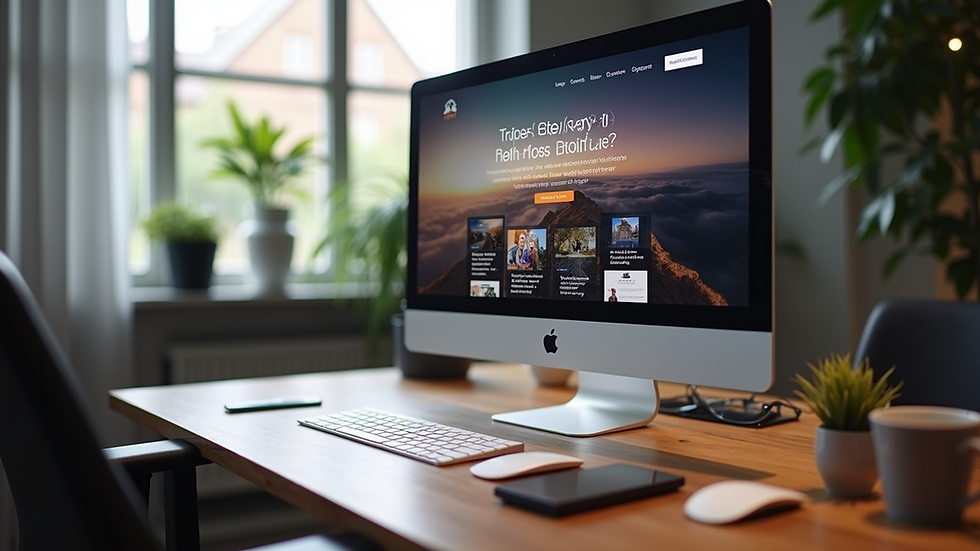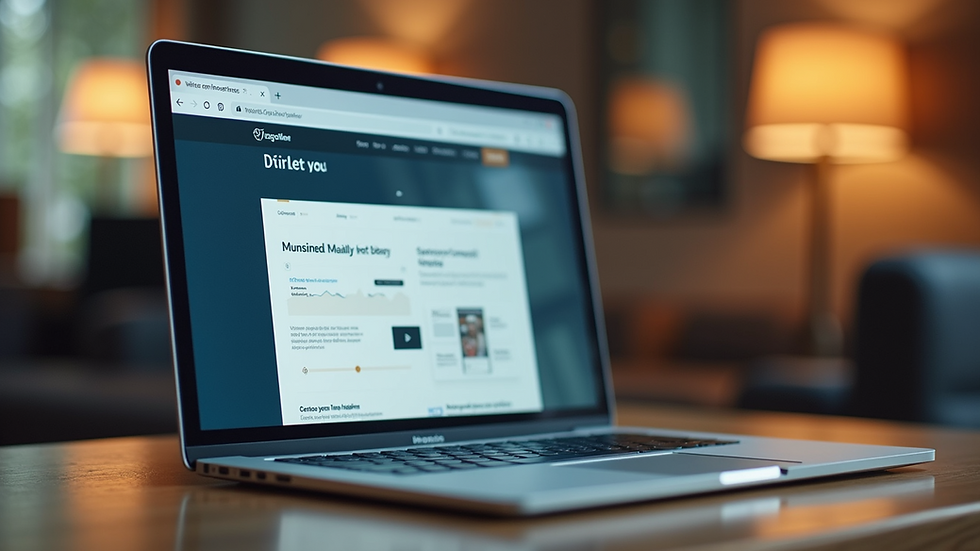Affordable Web Design Solutions for USA Businesses
- Donald W. Carroll
- Jul 20
- 4 min read
In today's digital world, having a strong online presence is crucial for businesses of all sizes. However, many small to medium-sized companies often struggle to find high-quality web design solutions that fit their budget. Fortunately, there are plenty of affordable web design options available that cater to the diverse needs of businesses across the USA. In this blog post, we will explore various affordable web design solutions, their benefits, and tips on how to choose the right approach for your business.
Budget-Friendly Web Design USA
Understanding the value of a well-designed website is essential. It's not just about aesthetics; a professional website can also enhance your credibility, improve user experience, and increase conversions. Fortunately, affordable options are available that don't sacrifice quality for price. Here are some solutions to consider:
Freelancers: Hiring freelance web designers can be a cost-effective option. Freelancers often have lower overhead costs than agencies, allowing them to offer competitive rates. Websites like Upwork and Fiverr can connect you with talented designers who can create a custom website tailored to your needs.
Website Builders: If you're looking for a DIY approach, website builders like Wix, Squarespace, or Weebly allow you to create a website using pre-designed templates. These platforms offer drag-and-drop functionality, making it easy even for those without coding knowledge to build a professional-looking site.
Content Management Systems (CMS): Platforms like WordPress provide affordable web design USA solutions by offering numerous themes and plugins that can enhance your site. While you may need some technical know-how, it's still a budget-friendly option compared to hiring a full-service agency.
Local Design Schools: Partnering with local design schools can also provide budget-friendly web design options. Students looking for real-world experience often take on projects at reduced rates. This allows you to get a professionally designed site while providing valuable experience to the students.

Identifying Your Needs and Setting a Budget
Before diving into the web design process, it's crucial to identify what you need in a website. Here are some questions to consider:
What is the purpose of your website? Decide whether your site will serve as an online portfolio, an e-commerce platform, or a blog.
Who is your target audience? Understanding your audience can help inform design choices.
What features do you require? Consider whether you need e-commerce capabilities, contact forms, or social media integration.
Setting a specific budget can help narrow your options. On average, small businesses can expect to spend anywhere from $500 to $5,000 on web design, depending on complexity and features.
How Much Does It Cost to Pay Someone to Design a Website?
The cost of hiring a professional web designer can vary significantly based on several factors:
Experience and Location of the Designer: Designers with more experience typically charge higher rates. Additionally, those located in urban areas may have different pricing compared to freelancers in smaller towns.
Complexity of the Site: A simple website may cost around $1,000, while a more complex site with custom features could run $5,000 or more.
Maintenance and Updates: Don't forget to factor in the cost for ongoing maintenance and updates, which can range from $50 to $300 per month depending on the level of service needed.
To maximize your budget, it may be helpful to get quotes from multiple designers and compare their offerings.

Leveraging Templates and Themes
In addition to hiring freelancers or using website builders, leveraging templates and themes can be an effective way to affordably enhance your website's design. Many platforms offer a wide range of templates that cater to various industries.
Choosing the Right Template: When selecting a template, consider customization options and how well it aligns with your brand identity. Look for templates that are responsive, ensuring your site functions well on mobile devices.
Investing in Premium Themes: If you're using WordPress, consider investing in a premium theme that offers more features and better support. These themes often come at a one-time cost ranging from $30 to $100, providing a good return on investment.
Customizing Your Template: Once you've selected a template, make sure to customize it to reflect your brand's unique personality. This can involve adjusting colors, fonts, and adding your own images to create a cohesive look.

Prioritizing User Experience
No matter what web design option you choose, prioritizing user experience (UX) is vital for the success of your website. A well-designed website should be easy to navigate and provide users with the information they need quickly. Here are some tips for enhancing UX:
Optimize for Mobile: With more users accessing websites via mobile devices, it's essential that your site is mobile-friendly. A responsive design automatically adjusts your site to fit various screen sizes.
Improve Load Times: Slow-loading websites can drive users away. Consider optimizing images and leveraging caching plugins to improve speed.
Simplify Navigation: Make sure your website's navigation is straightforward and intuitive. Use clear headings and a logical structure to guide visitors through your site.
By focusing on user experience, you can increase engagement and encourage visitors to take action, whether that's making a purchase or signing up for a newsletter.
Building Your Online Presence
In addition to web design, there are other aspects of building your online presence that should not be overlooked. Here are some key strategies to consider:
Search Engine Optimization (SEO): Optimizing your website for search engines is essential for attracting organic traffic. Focus on using relevant keywords, improving page load speeds, and creating high-quality content.
Social Media Integration: Leverage social media platforms to promote your website and connect with your audience. Include social sharing buttons on your website to encourage visitors to share your content.
Email Marketing: Building an email list can help you stay in touch with your audience and drive traffic back to your website. Consider offering a free resource in exchange for email sign-ups.
Investing in these complementary strategies can help you maximize the impact of your affordable web design efforts.
Final Thoughts on Affordable Web Design Solutions
Finding affordable web design solutions does not have to feel daunting. By exploring various options such as freelancers, website builders, and templates, you can create a professional website that fits your budget. Additionally, focusing on user experience and implementing complementary online strategies can significantly enhance your website's effectiveness.
For more insights and solutions on affordable web design USA, consider visiting DWC Web 2025. Embrace the opportunity to grow your business online without breaking the bank; your future customers are just a click away!




Comments